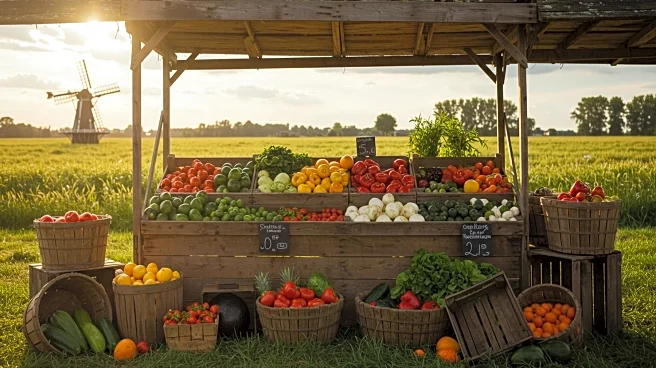Rapid Read • 8 min read
The USDA's August crop report has surprised markets by increasing corn yields from 181 to 188.8 bushels per acre, surpassing average market expectations. This adjustment, along with higher corn acreage, has resulted in ending stocks exceeding two billion bushels for the 2025-2026 period, exerting downward pressure on corn prices. Historically, August figures have been known to be inflated, and current disease pressures in Iowa may eventually lead to lower yields. Meanwhile, soybeans have seen support due to acreage reductions despite a yield increase, with stronger-than-expected crush data and technical charts indicating potential for price increases if a U.S.-China trade deal is reached soon.
AD
The USDA's report has significant implications for the agricultural sector, particularly for corn and soybean markets. The increased corn yields and stocks could lead to lower prices, affecting farmers' revenue and market dynamics. Conversely, the soybean market may benefit from tighter supplies and potential trade deals, offering opportunities for price gains. These developments are crucial for stakeholders in the agriculture industry, including farmers, producers, and agribusinesses, as they navigate market pressures and seek to optimize their strategies amidst changing conditions.
Attention is now shifting to the Pro Farmer Crop Tour and the upcoming September USDA report, which will be pivotal in determining the direction of corn and soybean prices as the harvest season approaches. Stakeholders will be closely monitoring these reports to adjust their strategies and anticipate market movements. Additionally, ongoing trade tensions and environmental factors, such as wildfires in Canada, could further influence crop conditions and market dynamics in the coming months.
The broader implications of the USDA's report extend to international trade relations, particularly with China, as President Trump has suggested increased soybean orders. The geopolitical landscape, including tariffs and trade agreements, will play a critical role in shaping agricultural markets. Furthermore, environmental concerns, such as wildfires, may impact crop yields and quality, highlighting the need for adaptive strategies in the face of climate-related challenges.
AD
More Stories You Might Enjoy











